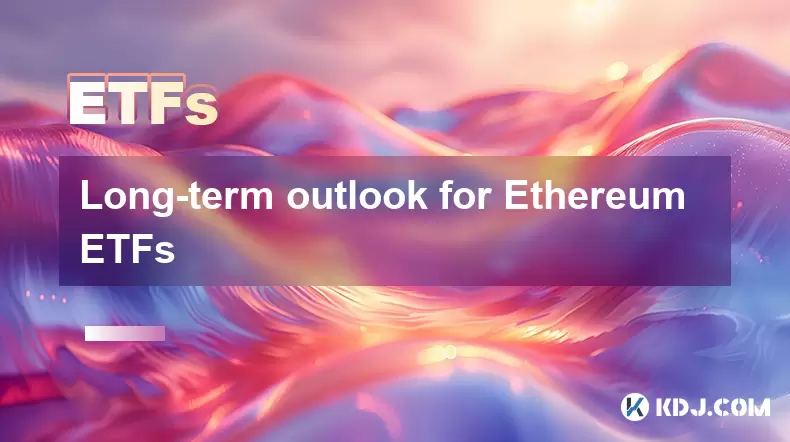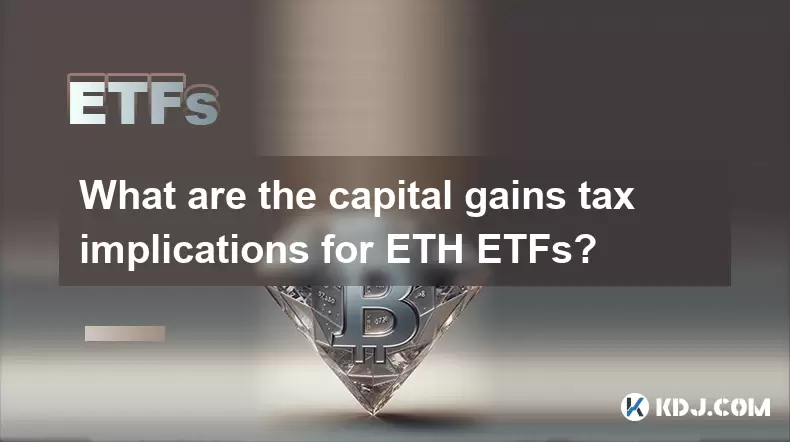-
 Bitcoin
Bitcoin $114000
0.88% -
 Ethereum
Ethereum $3484
1.43% -
 XRP
XRP $2.908
2.54% -
 Tether USDt
Tether USDt $0.0000
0.03% -
 BNB
BNB $750.7
0.89% -
 Solana
Solana $162.0
1.01% -
 USDC
USDC $0.9998
0.01% -
 TRON
TRON $0.3257
1.53% -
 Dogecoin
Dogecoin $0.1993
2.48% -
 Cardano
Cardano $0.7264
4.07% -
 Hyperliquid
Hyperliquid $38.33
2.79% -
 Stellar
Stellar $0.3986
7.87% -
 Sui
Sui $3.417
2.30% -
 Chainlink
Chainlink $16.24
3.45% -
 Bitcoin Cash
Bitcoin Cash $541.5
2.34% -
 Hedera
Hedera $0.2480
7.63% -
 Ethena USDe
Ethena USDe $1.001
0.05% -
 Avalanche
Avalanche $21.36
1.47% -
 Toncoin
Toncoin $3.631
0.03% -
 Litecoin
Litecoin $109.3
4.09% -
 UNUS SED LEO
UNUS SED LEO $8.954
-0.06% -
 Shiba Inu
Shiba Inu $0.00001220
2.91% -
 Polkadot
Polkadot $3.587
2.62% -
 Uniswap
Uniswap $9.139
3.54% -
 Monero
Monero $299.3
2.17% -
 Dai
Dai $1.000
0.01% -
 Bitget Token
Bitget Token $4.335
1.82% -
 Pepe
Pepe $0.00001044
3.27% -
 Cronos
Cronos $0.1336
4.99% -
 Aave
Aave $258.0
3.20%
Does Ethereum spot trading support leverage?
Ethereum spot trading doesn't offer leverage; it's a direct exchange at the current market price. Leverage, magnifying both profits and losses, is primarily found in futures and derivatives trading, carrying significant liquidation risks.
Feb 28, 2025 at 05:54 pm

Does Ethereum Spot Trading Support Leverage? A Deep Dive into Leveraged Ethereum Trading
Key Points:
- Understanding Spot vs. Futures/Derivatives Trading: Spot trading involves the immediate exchange of Ethereum (ETH) for fiat currency or another cryptocurrency at the current market price. Futures and derivatives trading, on the other hand, involve agreements to buy or sell ETH at a future date at a predetermined price. Leverage is primarily associated with futures and derivatives trading, not spot trading.
- Leverage Explained: Leverage is a tool that allows traders to borrow funds to amplify their potential profits (and losses). A 5x leverage, for instance, means a trader can control five times the value of their initial investment. While it magnifies potential gains, it also dramatically increases the risk of significant losses.
- Lack of Direct Leverage in Spot ETH Trading: Standard spot exchanges do not offer direct leverage on ETH spot trades. The act of buying and selling ETH on a spot exchange is a straightforward transaction based on the immediate market price. Any increase or decrease in your holdings directly reflects the price movement of ETH.
- Achieving Leverage Effects Through Alternative Strategies: While direct leverage isn't available, traders can indirectly achieve leveraged effects through other methods, such as margin trading on derivatives platforms or using sophisticated lending and borrowing protocols within the DeFi ecosystem. These methods, however, carry significant risks.
- Risks Associated with Leveraged Trading: High leverage significantly increases the risk of liquidation. Liquidation occurs when the trader's losses exceed their margin, forcing the exchange to automatically sell their assets to cover the debt. This can lead to substantial losses, potentially exceeding the initial investment.
Unordered List of Detailed Explanations:
- Understanding Spot vs. Futures/Derivatives Trading and the Role of Leverage:
Spot trading is the simplest form of cryptocurrency trading. You buy ETH at the current market price and immediately own it. The profit or loss you experience is directly tied to the price movement of ETH. If the price goes up, your holdings increase in value; if it goes down, your holdings decrease. This is a straightforward, relatively low-risk approach compared to leveraged trading. Futures and derivatives, however, are contracts that allow you to speculate on the future price of ETH without actually owning it. These contracts often involve leverage, enabling traders to control a larger position than their initial capital would allow. This leverage amplifies both potential profits and losses. The crucial difference lies in the timing of the transaction and the introduction of leverage as a risk multiplier. Spot trading is about immediate ownership; futures/derivatives trading is about predicting future price movements with the added risk and reward of leverage. Leverage, therefore, is fundamentally linked to derivatives trading and is generally absent from spot trading on regulated exchanges. The use of leverage introduces significant risk. A small adverse price movement can quickly lead to substantial losses, potentially exceeding the trader's initial investment. This is why it's crucial for traders to understand the risks involved before using leverage. Proper risk management techniques, such as setting stop-loss orders and diversifying portfolios, are essential for mitigating these risks. Ignoring these precautions can lead to significant financial losses. The inherent volatility of the cryptocurrency market further exacerbates the risks associated with leveraged trading.
- Leverage Mechanisms and their Implications:
Leverage works by allowing traders to borrow funds to increase their trading power. For example, with 5x leverage, a trader can control five times the value of their initial investment. If the price moves favorably, their profits are magnified fivefold. However, if the price moves against them, their losses are also magnified fivefold. This is a double-edged sword, offering the potential for significant gains but also the potential for catastrophic losses. Understanding how leverage works is crucial for responsible trading. The leverage multiplier is set by the exchange or platform offering the leveraged trading. The amount of leverage available varies depending on the platform and the specific cryptocurrency being traded. It's essential to carefully consider the level of leverage used, as higher leverage amplifies both profits and losses. The margin requirement is another crucial aspect of leveraged trading. The margin is the amount of capital a trader needs to maintain to keep their leveraged position open. If the price moves against the trader and their account balance falls below the margin requirement, the exchange may issue a margin call, requiring the trader to deposit more funds to maintain their position. Failure to meet a margin call can lead to liquidation, where the exchange automatically closes the trader's position to cover their losses. Liquidation can result in significant financial losses for the trader. Proper risk management, including the use of stop-loss orders and careful position sizing, is crucial to mitigate the risks associated with leveraged trading.
- Absence of Direct Leverage in Spot Ethereum Trading on Major Exchanges:
Reputable centralized exchanges that offer spot Ethereum trading generally do not provide direct leverage on those trades. The core function of a spot exchange is to facilitate the immediate buying and selling of cryptocurrencies at the prevailing market price. Adding leverage to spot trading would fundamentally alter this function, introducing significant risk and complexity. The inherent volatility of cryptocurrencies already poses considerable risk to spot traders. Introducing leverage would amplify this volatility, potentially leading to rapid and substantial losses. Centralized exchanges are typically subject to regulatory oversight, and offering direct leverage on spot trading could expose them to greater regulatory scrutiny and potential legal liabilities. This is a key reason why most reputable exchanges do not offer this feature. Moreover, the addition of leverage to spot trading would require significant changes to the exchange's infrastructure and trading systems. Implementing robust risk management mechanisms to prevent excessive losses would be a major undertaking. The cost and complexity of such an implementation may outweigh the potential benefits for the exchange. Therefore, the absence of direct leverage on spot Ethereum trading on major exchanges is a deliberate decision based on risk management, regulatory considerations, and operational complexities.
- Indirect Methods for Achieving Leveraged Exposure to Ethereum:
While direct leverage isn't available on spot Ethereum exchanges, traders can explore alternative strategies to achieve a similar effect, albeit with heightened risk. These strategies generally involve using derivatives markets or decentralized finance (DeFi) protocols. Margin trading on derivatives exchanges allows traders to borrow funds to amplify their positions, similar to leverage on spot trades, but with the added risk of liquidation. The trader must maintain a minimum margin balance to avoid liquidation. If the price moves against the trader and their margin balance falls below the required level, their position will be automatically closed, resulting in potential substantial losses. DeFi protocols offer various lending and borrowing mechanisms that can be used to create leveraged positions. For instance, a trader could borrow ETH to increase their exposure to the cryptocurrency. However, these protocols often involve complex smart contracts and carry significant risks, including smart contract vulnerabilities and potential exploits. Impermanent loss is another risk associated with using DeFi protocols for leveraged trading. Impermanent loss occurs when the price of the assets in a liquidity pool changes, resulting in a loss compared to simply holding the assets. This loss can be significant, especially in volatile markets. Traders should carefully research and understand the risks associated with these protocols before using them. The use of these methods requires a sophisticated understanding of financial markets and cryptocurrency trading strategies. It's highly recommended that only experienced traders with a thorough understanding of the risks involved attempt to achieve leveraged exposure to Ethereum through these methods.
- Risks of Leveraged Trading and Mitigation Strategies:
The most significant risk associated with leveraged trading is the potential for substantial losses. Because leverage magnifies both profits and losses, even a small adverse price movement can lead to significant losses that exceed the trader's initial investment. Liquidation is a major concern in leveraged trading. When a trader's losses exceed their margin, the exchange or platform will automatically close their position to cover the losses. This can happen very quickly, especially in volatile markets. The speed at which liquidation can occur often leaves traders with minimal opportunity to react. Risk management strategies are essential for mitigating the risks of leveraged trading. Setting stop-loss orders is a crucial step. A stop-loss order automatically closes a position when the price reaches a predetermined level, limiting potential losses. Proper position sizing is also important. Traders should avoid over-leveraging their positions, ensuring they have sufficient capital to withstand potential losses. Diversification is another effective risk management strategy. Instead of concentrating all capital in one leveraged position, spreading investments across multiple assets can reduce the impact of losses on any single position. Thorough research and understanding of the underlying asset are crucial. Before engaging in leveraged trading, traders must have a comprehensive understanding of the cryptocurrency market and the specific asset they are trading. Staying informed about market trends and news is also essential for making informed trading decisions. Finally, it's important to remember that past performance is not indicative of future results. Leveraged trading is inherently risky, and there's no guarantee of profits.
FAQs:
Q: What is the difference between spot and futures trading in the context of Ethereum?
A: Spot trading involves buying and selling Ethereum at the current market price for immediate delivery. Futures trading involves agreeing to buy or sell Ethereum at a specific price on a future date. Futures trading often utilizes leverage, while spot trading does not.
Q: Can I use leverage to buy Ethereum directly on a spot exchange?
A: No, reputable centralized exchanges generally do not offer leverage on their spot Ethereum trading platforms. Leverage is typically associated with derivatives trading, such as futures or options contracts.
Q: What are the risks of using leverage to trade Ethereum?
A: The primary risk is liquidation, where your position is automatically closed due to losses exceeding your margin, resulting in potential losses far exceeding your initial investment. High leverage magnifies both potential profits and losses, increasing volatility and risk.
Q: Are there any alternatives to direct leverage for increasing exposure to Ethereum?
A: Yes, margin trading on derivatives platforms and using DeFi lending/borrowing protocols can indirectly provide leveraged exposure, but these methods carry their own set of complexities and risks, including smart contract vulnerabilities and impermanent loss.
Q: How can I mitigate the risks of leveraged Ethereum trading?
A: Implement robust risk management strategies, such as using stop-loss orders, careful position sizing, diversification, thorough research, and staying informed about market trends. Never leverage beyond your risk tolerance.
Q: Is it advisable for beginners to use leverage when trading Ethereum?
A: No, leveraged trading is generally not recommended for beginners. It is a high-risk strategy requiring significant understanding of market dynamics and risk management techniques. Beginners should focus on learning the basics of spot trading before considering leveraged trading.
Disclaimer:info@kdj.com
The information provided is not trading advice. kdj.com does not assume any responsibility for any investments made based on the information provided in this article. Cryptocurrencies are highly volatile and it is highly recommended that you invest with caution after thorough research!
If you believe that the content used on this website infringes your copyright, please contact us immediately (info@kdj.com) and we will delete it promptly.
- Punisher Coin Presale: Your Ticket to 100x Gains in 2025?
- 2025-08-04 00:50:14
- BlockchainFX: The Next Crypto Millionaire Maker After BNB and Tron?
- 2025-08-04 01:10:14
- XRP: Crypto Analyst's Smartest Buy in 2025?
- 2025-08-04 00:30:13
- SEC, Crypto Regulation, and Digital Assets: A New Era?
- 2025-08-04 00:30:13
- Navigating the Meme Coin Mania: Cold Wallets, SHIB, and DOGE in 2025
- 2025-08-03 22:30:16
- Bitcoin's Price Fall and Scrutiny: What's a New Yorker to Think?
- 2025-08-03 22:30:16
Related knowledge

Long-term outlook for Ethereum ETFs
Jul 22,2025 at 06:42am
What Exactly Is an Ethereum ETF?An Ethereum Exchange-Traded Fund (ETF) is a financial product that tracks the price of Ethereum (ETH) and is traded on...

How does the ETH ETF affect Ethereum's network security?
Jul 17,2025 at 01:29pm
Understanding the ETH ETF ConceptAn Ethereum Exchange-Traded Fund (ETH ETF) is a financial product that allows investors to gain exposure to Ethereum ...

What are the capital gains tax implications for ETH ETFs?
Jul 18,2025 at 08:00am
Understanding Capital Gains Tax in Cryptocurrency InvestmentsCapital gains tax is a tax imposed on the profit realized from the sale of an asset that ...

What are the capital gains tax implications for ETH ETFs?
Jul 21,2025 at 11:14am
Understanding ETH ETFs and Their TaxationAn Ethereum Exchange-Traded Fund (ETH ETF) allows investors to gain exposure to Ethereum without directly own...

Understanding the creation and redemption process of an ETH ETF
Jul 19,2025 at 07:36am
What is an ETH ETF?An ETH ETF (Ethereum Exchange-Traded Fund) is a financial product designed to track the price of Ethereum without requiring investo...

How to analyze which ETH ETF is the best choice
Jul 19,2025 at 05:01pm
Understanding ETH ETFs and Their RelevanceEthereum Exchange-Traded Funds (ETFs) have emerged as a popular investment vehicle for those seeking exposur...

Long-term outlook for Ethereum ETFs
Jul 22,2025 at 06:42am
What Exactly Is an Ethereum ETF?An Ethereum Exchange-Traded Fund (ETF) is a financial product that tracks the price of Ethereum (ETH) and is traded on...

How does the ETH ETF affect Ethereum's network security?
Jul 17,2025 at 01:29pm
Understanding the ETH ETF ConceptAn Ethereum Exchange-Traded Fund (ETH ETF) is a financial product that allows investors to gain exposure to Ethereum ...

What are the capital gains tax implications for ETH ETFs?
Jul 18,2025 at 08:00am
Understanding Capital Gains Tax in Cryptocurrency InvestmentsCapital gains tax is a tax imposed on the profit realized from the sale of an asset that ...

What are the capital gains tax implications for ETH ETFs?
Jul 21,2025 at 11:14am
Understanding ETH ETFs and Their TaxationAn Ethereum Exchange-Traded Fund (ETH ETF) allows investors to gain exposure to Ethereum without directly own...

Understanding the creation and redemption process of an ETH ETF
Jul 19,2025 at 07:36am
What is an ETH ETF?An ETH ETF (Ethereum Exchange-Traded Fund) is a financial product designed to track the price of Ethereum without requiring investo...

How to analyze which ETH ETF is the best choice
Jul 19,2025 at 05:01pm
Understanding ETH ETFs and Their RelevanceEthereum Exchange-Traded Funds (ETFs) have emerged as a popular investment vehicle for those seeking exposur...
See all articles

























































































